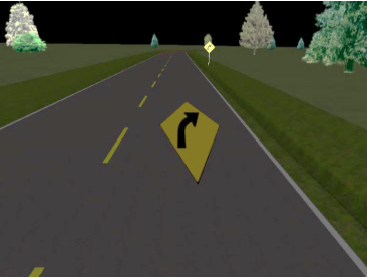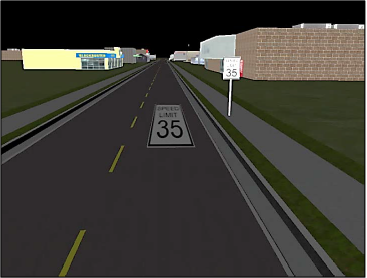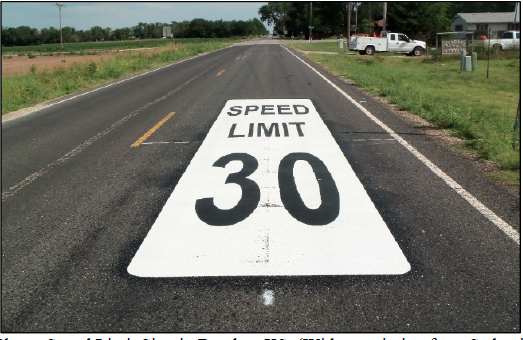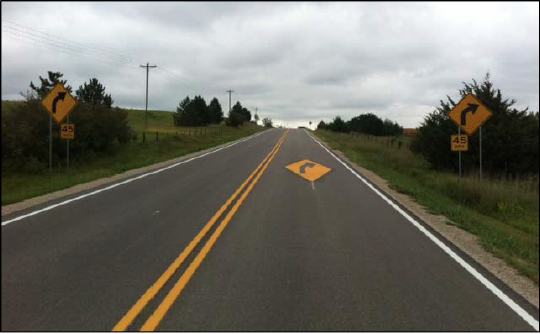Researchers: David Noyce (PI), Madhav Chitturi
Primary Project Objectives
The Manual on Uniform Traffic Control Devices (MUTCD) states that regulatory and warning signs should be placed on posts or mountings and located on the right-hand side of the roadway where they are easily recognized and understood by road users. In certain geometric and operational conditions, post-mounted signs may not be easily recognized or provide adequate information for passing road users. When these geometric and operational conditions occur, complementary pavement markings might be helpful when used with warning, regulatory, or guide signs. These conditions may include reduced speed zones, certain turn prohibitions, pedestrian crossings, right of way regulations, destination names, and route numbers.
The objective of this study was to evaluate the conspicuity, legibility and effectiveness of symbolized pavement markings that are elongated (horizontal) versions of the post-mounted signs they complement. Specifically, the study evaluated the effectiveness of Speed Limit regulatory (R2-1), Curve warning (W1-2) and Pedestrian Crossing warning (W11-2) signs as elongated pavement marking signs when used to complement the corresponding posted-mounted signs. A literature and state-of-the-practice review was conducted followed by a driving simulator and field evaluation of elongated pavement marking signs.
All factors being equal, pavement marking signs are more likely to be detected by drivers than post-mounted signs given their targeted location within the drivers’ path. Drivers spend most of the time looking at the roadway directly ahead. As a result, objects on the side of the road may be less likely to be detected by drivers. Additionally, distracted drivers may be focused in otherdirections or on other tasks and may miss important traffic control information. Several studies have shown that post-mounted signs have a low registration rate (i.e., some drivers do not attend to or notice them) and their registration can be further hampered by the presence of heavy vehicles and other traffic as well as visual clutter in urban environments. Past studies have shown that pavement marking signs are effective from both operations and safety perspectives. The use of curve warning and speed limit pavement marking signs were reported in the literature.

|

|

|

|
Elongated pavement marking letters and arrows have been shown to significantly improve recognition distance when compared to non-elongated pavement marking letters and arrows. Current practice in the US is to elongate at a ratio of 2.5:1. Elongated pavement marking signs and words are widely used in Europe and Australia; however, the elongation ratio (height to width ratio) differs from country to country. In some instances, elongation ratio of as much as 10:1 is recommended. Furthermore, some countries use different elongation ratios based on posted speed limit, with greater elongation ratios on roadways with higher speeds, while other countries use a single elongation ratio regardless of the speed limit of the roadway. As a result, there is little international consistency on pavement marking elongation ratios.
Based on literature and state-of-the-practice review, and a survey of the Traffic Control Devices Pooled Fund Study members, speed limit regulatory (R2-1), curve warning (W1-2) and pedestrian crossing warning (W11-2) sign were selected for the driving simulator evaluation. Field evaluation was limited to speed limit regulatory and curve warning signs.